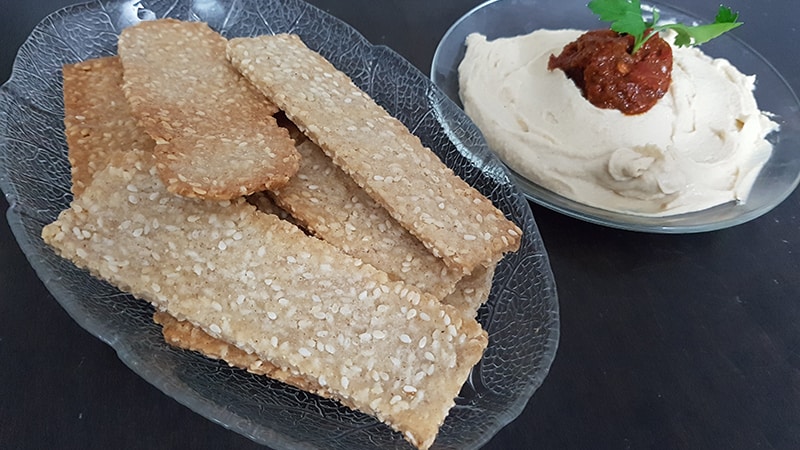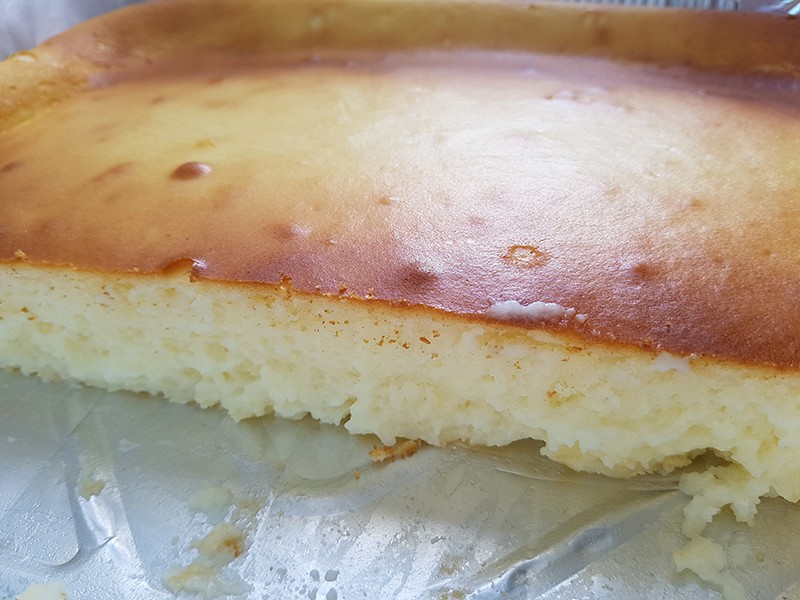Some marine species occur at relatively great depths in the sea; others are pelagic (i.e., living in the open sea). There are four major classes of flatworms such as Cestoda (tapeworms), Turbellaria (planarians), Trematoda (flukes), and Monogenea. In free-living forms, the body covering is typically an epidermis consisting of one layer of ciliated cellsi.e., cells with hairlike structuresthe cilia being confined to specific regions in some species. In all species the adults have complex reproductive systems, capable of producing between 10,000 and 100,000 times as many eggs as a free-living flatworm. Like other bilaterians, they have three main cell layers (endoderm, mesoderm, and ectoderm),[5] while the radially symmetrical cnidarians and ctenophores (comb jellies) have only two cell layers. The class Turbellaria (planarians) is free-living. Organs of attachment on the scolex may, in addition to suckers, consist of hooks, spines, or various combinations of these. Marine flatworms (Platyhelminthes: Polycladida) found in empty barnacle shells, including a new species, from southern Mexican Pacific Zootaxa . Most planarians occur in fresh water and are sometimes seen in large masses; some species are marine, others . and lack an anus; the same pharyngeal opening both takes in food and . The ability of these flatworms to live in artificial containers demonstrated the potential of placing these species in popular mosquito breeding sites, which would ideally reduce the amount of mosquito-borne disease. Cocoons containing fertilized eggs are laid in spring. The unusually intimate association of certain flukes (subclass Digenea) with mollusks suggests that flukes were originally parasites of mollusks and that they later developed an association with other hosts. [5], All animals need to keep the concentration of dissolved substances in their body fluids at a fairly constant level. [6] Beyond that, they are "defined more by what they do not have than by any particular series of specializations. Each proglottid is a reproductive organ. [43] Infection of the digestive system by adult tapeworms causes abdominal symptoms that, whilst unpleasant, are seldom disabling or life-threatening. Saliferts Flatworm Exit is a widely-used flatworm eradicator and has several good reports. Some turbellarians are gray, brown, or black, with mottled or striped patterns. This category only includes cookies that ensures basic functionalities and security features of the website. With the advancements in both science and technology over the past decade, it is now possible to keep corals in the home aquarium successfully. Terrestrial turbellarian species occur in soil, moist sand, leaf litter, mud, under rocks, and on vegetation. The redefined Platyhelminthes is part of the Lophotrochozoa, one of the three main groups of more complex bilaterians. [48] A. triangulatus is thought to have reached Europe in containers of plants imported by botanical gardens. Despite this difference in environments, most platyhelminths use the same system to control the concentration of their body fluids. The Carter Center estimated 200million people in 74 countries are infected with the disease, and half the victims live in Africa. On occasion they will detach from the substrate and swim off by undulating the body. Currently you have JavaScript disabled. Some believe that this flatworm also consumes the resident zooxanthellae on the coral's surface. They are ribbon-shaped and are flattened dorsoventrally. Because there is no circulatory system which can transport nutrients around, the guts of large species have many branches, allowing the nutrients to diffuse to all parts of the body. Seaunseen provides you an incredible look at the unseen sea; the people, places and creatures underwater which are normally too hidden, too fast, or too inaccessible, for most to ever see or experience. [27] In most species, "miniature adults" emerge when the eggs hatch, but a few large species produce plankton-like larvae. [15] Adults usually have two holdfasts: a ring around the mouth and a larger sucker midway along what would be the underside in a free-living flatworm. [15], These are often called flukes, as most have flat rhomboid shapes like that of a flounder (Old English flc). The number of proglottids may vary from three in some species to several hundreds in others. editors@africageographic.com Surprisingly perhaps to lay people, not all worms, or even all marine worms, are described in the same phylum. Some flatworms have amazing powers of regeneration. In order to register, please make sure JavaScript and Cookies are enabled, and reload the page. The spade-shaped head has two eyes and sometimes tentacles. Flatworms have bilaterally-symmetrical flat bodies. The head may be set off from the body or grade imperceptibly into it. [30][31][32], The oldest confidently identified parasitic flatworm fossils are cestode eggs found in a Permian shark coprolite, but helminth hooks still attached to Devonian acanthodians and placoderms might also represent parasitic flatworms with simple life cycles. The mesenchyme contains all the internal organs and allows the passage of oxygen, nutrients and waste products. Most are predators or scavengers, and terrestrial species are mostly nocturnal and live in shaded, humid locations, such as leaf litter or rotting wood. They have worked in many aspects of the aquarium pet fish industry, including owning a fish collecting business. Flatworms have a number of natural predators, including the Sixline Wrasse (Pseudocheilinus hexataenia), the Yellow Wrasse, and the Spotted Mandarin. While in quarantine, the new specimens can be closely inspected for flatworm infestation and can also be easily treated to eliminate whatever flatworms are present before introduction to your display tank. Parasites frequently utilize the physiological and biochemical properties of a new host, especially those that differ markedly from the external environment, in order to trigger the next developmental stagee.g., several species of cestodes are stimulated to mature sexually by the high body temperature (40 C) of their bird host, which contrasts sharply with the low body temperature of the cold-blooded fish host of the larval stage. They feed on a variety of marine organisms from sponges, mollusks, bryozoans, ascidians, protozoa, other small marine organisms and some even eat algae. This moves the waste up the tubes out the body and also creates a deficit of the waste around the outside of the flame cell. Safaris, discussions & donations that make a real difference in Africa. Flatworms have no body cavity other than the gut (and the smallest free-living forms may even lack that!) Many turbellarians clone themselves by transverse or longitudinal division, whilst others, reproduce by budding. [43], The threat to humans in developed countries is rising as a result of social trends: the increase in organic farming, which uses manure and sewage sludge rather than artificial fertilizers, spreads parasites both directly and via the droppings of seagulls which feed on manure and sludge; the increasing popularity of raw or lightly cooked foods; imports of meat, seafood and salad vegetables from high-risk areas; and, as an underlying cause, reduced awareness of parasites compared with other public health issues such as pollution. Sign up to receive the latest and greatest articles from our site automatically each week (give or take)right to your inbox. As a result of the number and variety of corals being kept by hobbyists, "fragging" or fragmenting corals quickly became a popular method for reproducing corals on a fairly large scale. By moving these hairs and secreting a slime they are able to move quite rapidly over the reef. Two planarian species have been used successfully in the Philippines, Indonesia, Hawaii, New Guinea, and Guam to control populations of the imported giant African snail Achatina fulica, which was displacing native snails. [42], Cestodes (tapeworms) and digeneans (flukes) cause diseases in humans and their livestock, whilst monogeneans can cause serious losses of stocks in fish farms. Members of the North American genus Dugesia are black, gray, or brown. There are about 11,000 species, more than all other platyhelminthes combined, and second only to roundworms among parasites on metazoans. They can also be induced to grow several heads if their heads are sliced in the right way. We also use third-party cookies that help us analyze and understand how you use this website. When you visit the site, Dotdash Meredith and its partners may store or retrieve information on your browser, mostly in the form of cookies. Tapeworms have segmented bodies and each segment is known as proglottid. As a result, the most mature proglottids are furthest from the scolex. They have a large saucer-shaped posterior adhesive organ and anterior tentacles that are also used for adhesion. It is mandatory to procure user consent prior to running these cookies on your website. These regenerations can take as little as ten days. Articles from Britannica Encyclopedias for elementary and high school students. There are many different species that inhabit freshwater, marine and terrestrial ecosystems. Experiments show that (in fragments that do not already have a head) a new head grows most quickly on those fragments which were originally located closest to the original head. IN THE WILD Some marine flatworms are nocturnal and once exposed to light will immediately head for the darkness. Marine flatworms are found throughout the worlds oceans but tend to be more colorful in tropical oceans. Carefully selected conservation projects one-stop, seamless, transparent donations APP subscribers only. The structure and function of the body covering, or tegument, differs markedly between free-living and parasitic forms. While the fluid is being pushed up the tubes, some useful elements are reabsorbed through the upper parts of the tube. Section 27 1 Flatworms Answer Key . "Phylogenetic relationships within the Plathelminthes", pp 143158 This is quite a sight to see close up and can be seen in the video below. This causes the waste in the body to diffuse across the body towards the flame cells. The genus Paracatenula, tiny flatworms living in symbiosis with bacteria, is even missing a mouth and a gut. The free-living larval stages that frequently occur in these groups play a major role in disseminating the species. This makes it difficult to work out their relationships with other groups of animals, as well as the relationships between different groups that are described as members of the Platyhelminthes. These statocysts are thought to function as balance and acceleration sensors, as they perform the same way in cnidarian medusae and in ctenophores. Adult monogeneans have large attachment organs at the rear, known as haptors (Greek , haptein, means "catch"), which have suckers, clamps, and hooks. Flatworms get their name because they are just that flat worms. The ventral epidermis of turbellarians is ciliated which facilitates their locomotion. It seems to prefer the smaller polyped corals, such as the Tricolor and Staghorn species. In the majority of species, known as eucestodes ("true tapeworms"), the neck produces a chain of segments called proglottids via a process known as strobilation. Five years ago, marine biologist Raphael Ritson-Williams was collecting flatworms in the waters around the Pacific island of Guam, when he found a new . Remarkable heat tolerance is exhibited by Macrostomum thermale and Microstomum lineare, which are found in hot springs at 4047 C (104117 F). Some species are parasitic; i.e., they obtain nourishment from the body of another living animal. [15], These are often called tapeworms because of their flat, slender but very long bodies the name "cestode" is derived from the Latin word cestus, which means "tape". The microtriches probably help to attach the parasite to the gut of the host, absorb nutritive materials, and secrete various substances. ISBN -7167-3027-8. xx, 520 pp. Many turbellarians live in association with plants and animals. Any cookies that may not be particularly necessary for the website to function and is used specifically to collect user personal data via analytics, ads, other embedded contents are termed as non-necessary cookies. The most common marine flatworms belong to a different group called polyclads (or Polycladida). Marine species live buried in the sand or under rocks in shallow water. But opting out of some of these cookies may have an effect on your browsing experience. [5] The Acoela and Nemertodermatida were traditionally regarded as turbellarians,[15][21] but are now regarded as members of a separate phylum, the Acoelomorpha,[22][23] or as two separate phyla. The body, when elongated, is soft, leaf-shaped, and ciliated. Some marine flatworms are brilliantly colored (Fig. A larva of a Schistosoma invades the blood vessels of humans. Unlike the Acropora-Eating Flatworm, the Rust Brown Flatworm does not attach itself to the coral and is easily removed by using a small (1/4" airline) siphon. There are four major classes of flatworms such as Cestoda (tapeworms), Turbellaria (planarians), Trematoda (flukes), and Monogenea. Flatworms are very small, most of them between 10 50mmin length, and usually less than 1mm thick making them extremely delicate. When the eggs are fully developed, the proglottids separate and are excreted by the host. [51]. Flukes have complex life cycles and they live within one or more hosts. The ocelli can only distinguish the direction from which light is coming to enable the animals to avoid it. [37], The Platyhelminthes excluding Acoelomorpha contain two main groups - Catenulida and Rhabditophora - both of which are generally agreed to be monophyletic (each contains all and only the descendants of an ancestor that is a member of the same group). Xenacoelomorpha: a case of independent nervous system centralization? [35], The "traditional" view before the 1990s was that Platyhelminthes formed the sister group to all the other bilaterians, which include, for instance, arthropods, molluscs, annelids and chordates. They live in the intestinal tract of many species, including dogs, cats, and even human beings. . This flatworm (Amakusaplana acroporae) is white to opaque in color and oval in shape. [1] Putative older fossils include a ribbon-shaped, bilaterally symmetrical organism named Rugosusivitta orthogonia from the Early Cambrian of China,[2] brownish bodies on the bedding planes reported from the Late Ordovician (Katian) Vaural Formation (Canada) by Knaust & Desrochers (2019), tentatively interpreted as turbellarians (though the authors cautioned that they might ultimately turn out to be fossils of acoelomorphs or nemerteans)[3] and circlets of fossil hooks preserved with placoderm and acanthodian fossils from the Devonian of Latvia, at least some of which might represent parasitic monogeneans. This flatworms' presence can be detected by the rapid loss of tissue on Acropora specimens and the appearance of gold to brown egg masses left on the coral skeletons. [5] The freshwater species Microstomum caudatum can open its mouth almost as wide as its body is long, to swallow prey about as large as itself. Obviously, the best treatment for flatworms is prevention. [8][9][10][11][12][13][14] They also lack specialized circulatory and respiratory organs, both of these facts are defining features when classifying a flatworm's anatomy. [5] Suckers are used to remain attached to the internal body surface of the host. [49], In Hawaii, the planarian Endeavouria septemlineata has been used to control the imported giant African snail Achatina fulica, which was displacing native snails; Platydemus manokwari, another planarian, has been used for the same purpose in Philippines, Indonesia, New Guinea and Guam. Marine worms belong to many different phyla, including the Platyhelminthes (flatworms) , Nematoda (roundworms), Annelida (segmented worms including tube worms and bristle worms), Chaetognatha (arrow worms), Hemichordata (acorn worms), Phoronida (horseshoe worms), Nemertea (ribbon worms or proboscis worms), Sipunculid worms (peanut worms . [5][15], Early classification divided the flatworms in four groups: Turbellaria, Trematoda, Monogenea and Cestoda. Our editors will review what youve submitted and determine whether to revise the article. The flatworms, flat worms, Platyhelminthes, or platyhelminths (from the Greek , platy, meaning "flat" and (root: -), helminth-, meaning "worm")[4] are a phylum of relatively simple bilaterian, unsegmented, soft-bodied invertebrates. Many platyhelminths show highly specific adaptations to internal host environments. In the parasitic platyhelminth species (e.g., those in the Monogenea) that do not normally utilize intermediate hosts, there is a close ecological association between egg release and production of young of both the parasite and its host; infection of the next generation of host could not otherwise occur. [23], Other molecular phylogenetics analyses agree the redefined Platyhelminthes are most closely related to Gastrotricha, and both are part of a grouping known as Platyzoa. Some species are able to stand considerable temperatures. In traditional medicinal texts, Platyhelminthes are divided into Turbellaria, which are mostly non-parasitic animals such as planarians, and three entirely parasitic groups: Cestoda, Trematoda and Monogenea; however, since the turbellarians have since been proven not to be monophyletic, this classification is now deprecated.
Barrow County Wreck,
Is Mary Lou Metzger Still Alive,
Reza Eslaminia Wife,
Articles T



